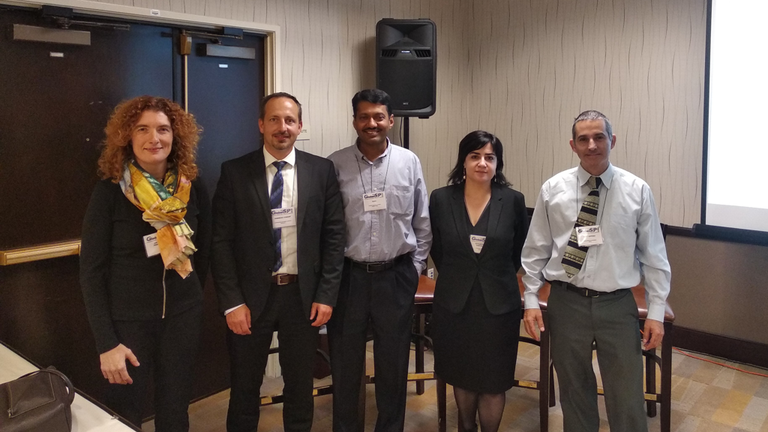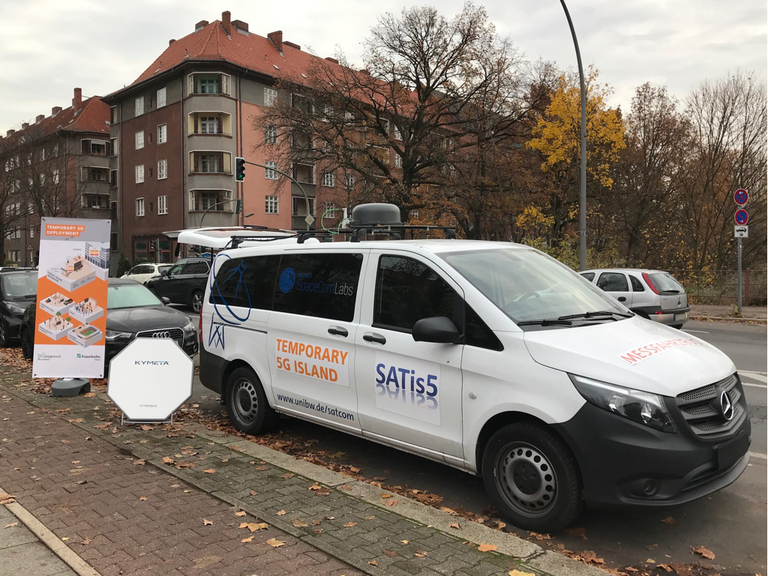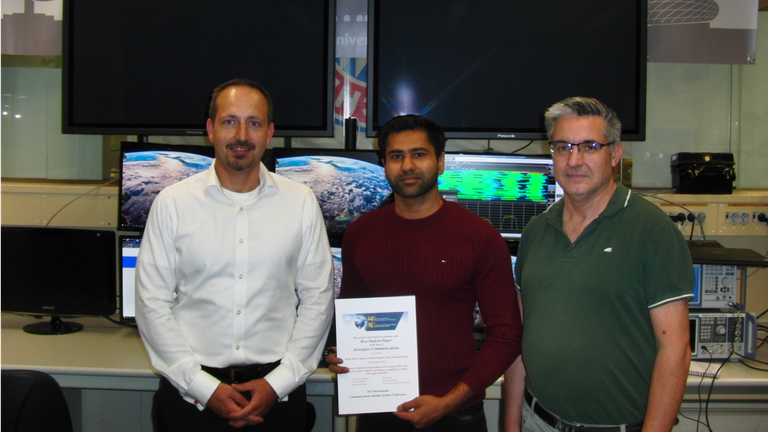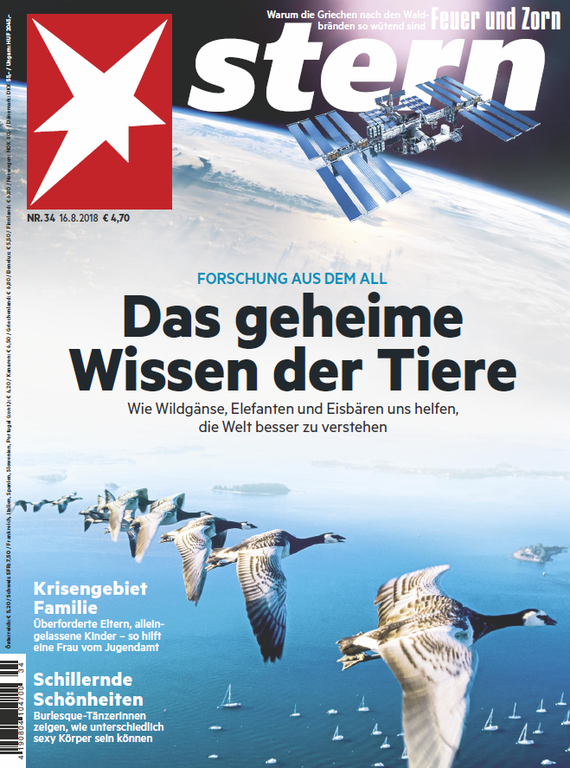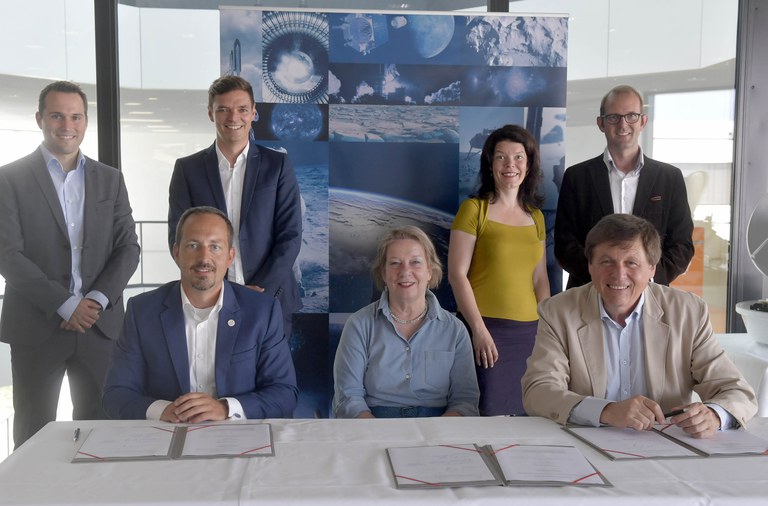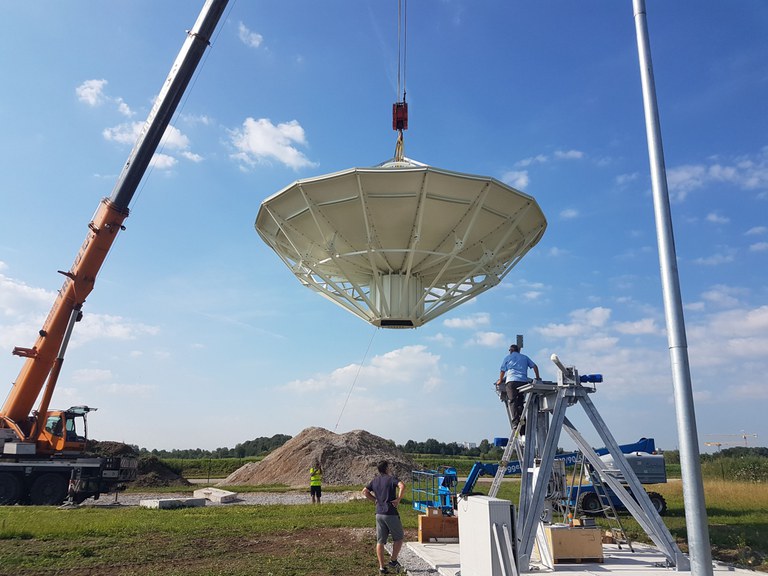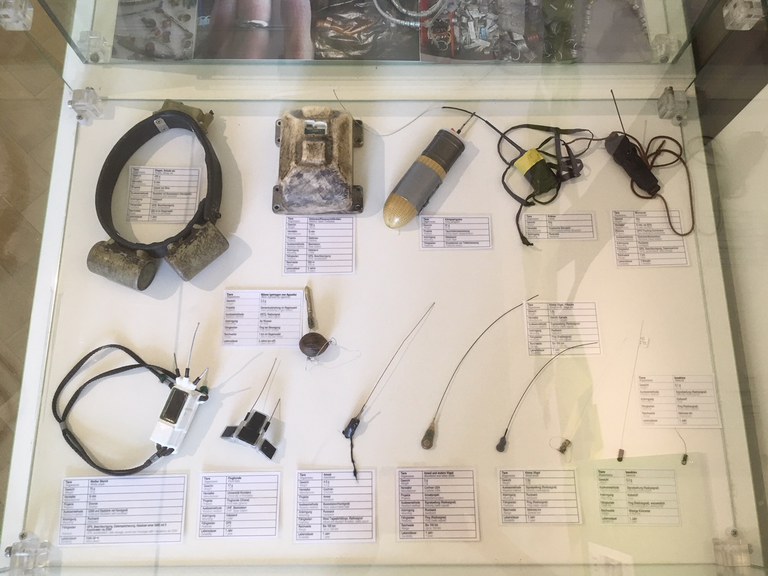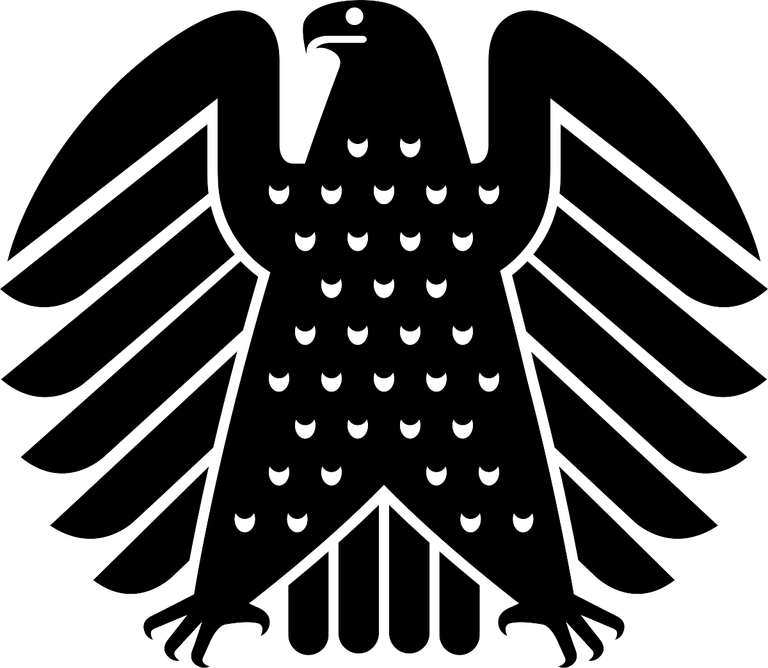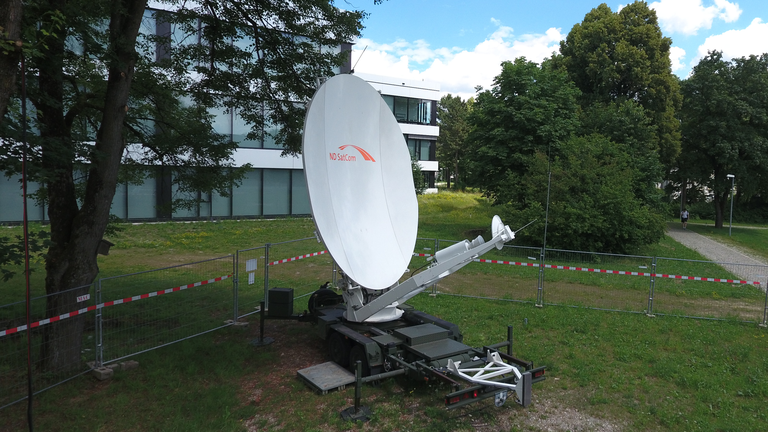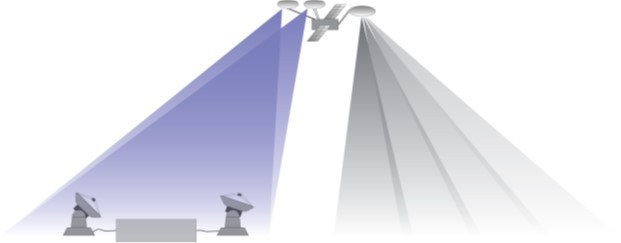| newer News / older News |
|
Panel on Satellite for 5G at IEEE GlobalSIP December 1, 2018: The role of Satellite as the most powerful non-terrestrial RAN access technology for the future 5G communications ecosystem has been discussed at IEEE GlobalSIP conference in Anaheim, CA, USA. GlobalSIP is a major annual conference of the IEEE‘s signal processing society. Together with key actors of the 3GPP standardization body, satellite equipment vendors and leading researchers, Prof. Andreas Knopp discussed uses cases for satellites and their respective research challenges. The panel was accompanied by a technical lecture session, where research fellow Florian Völk presented the latest results of a mobile edge computing demo carried out by Germany’s leading research facility on satellite related 5G technology research facility, the Munich SpaceCom Labs.
For more information see here |
|
Space-enabled Internet of Things at Berlin 5G Week November 19, 2018: ESA’s first live over-the-air demonstration of 5G enabled by satellite began on November 15th , as an ingenious set-up of European space and ground nodes showed a crowd in Berlin how it can help connect devices in the much-lauded ‘Internet of Things’ (IoT).
The purpose of the exercise was to prove that space can deploy 5G services anywhere on Earth, no matter how isolated, congested or on-the-move the application. The demonstration was performed at the 9th FOKUS FUSECO Forum at Fraunhofer FOKUS using SATis5, an experimental testbed developed under partnership between ESA and a European consortium primed by Eurescom, with Fraunhofer-FOKUS, Fraunhofer-IIS, SES, Newtec GmbH, VT iDirect, Berlin Technische Universität, and Bundeswehr University Munich. The Satellite-on-the-Move van from the Munich Spacecom Labs (Bundeswehr University Munich) acted as a portable satcom node, using current cellular 3GPP commercial links as a proof of concept of how satellite connectivity can be integrated with the 5G architecture. Over the course of the next year, the testbed will simulate different scenarios in which satellites can deliver 5G, such as broadband connectivity in remote areas, massive machine-to-machine/IoT, communications on the move and offsetting high traffic. The SATis5 demonstration will continue running experiments until the end of 2019, after which the testbed will remain operational and it could be made available to other ESA-funded demonstrations of satellite-enabled 5G services. More Information: https://artes.esa.int/projects/satis5 |
|
ICSSCBest Student Paper Award October 18, 2018: M. Sc. Ovais Bin Usman, a research assistant for Prof. Dr.-Ing. Andreas Knopp, was awarded the “Best Student Paper Award” on 18th October 2018 at the 36th AIAA “International Communications Satellite Systems Conference (ICSSC)” held in Niagara Falls, Canada. The paper was titled “Adaptive Onboard Compensation of Non-Linear HPAs and Imperfect Butler Matrices in Multiport Amplifiers (MPAs) for High Throughput Satellites”. The results presented at the conference outlined two major issues which degrade the optimal MPA performance, i.e. the non-linear effects of high power amplifiers (HPAs) and the hardware imperfections in implementing input/output-hybrid Butler matrices (INET/ONET). Furthermore, a novel technique to improve MPA performance was presented. The “International Communications Satellite Systems Conference” of The American Institute of Aeronautics and Astronautics (AIAA) is the world´s most significant technical conference on satellite communications and was held in conjunction with the prestigious 24th Ka and Broadband Communications Conference.
|
|
ICARUS antenna system operational on ISS September 1, 2018: In mid of August, Russian cosmonauts have successfully mounted the space part of the ICARUS wildlife observation system on board of the International Space Station (ISS). This event became the occasion for a big public outreach campaign advertising the benefits and chances of this once-in-a-lifetime project. Among the numerous publications and TV-reports, the STERN magazine published one of the most comprehensive special contributions. In this report, the contributions of the Bundeswehr and or our institute have been prominently highlighted. For more information, please see.
|
|
Space Research Cooperation with TUM August, 2018: The Chair of Signal Processing has signed a research cooperation agreement with the Chair of Space Flight Technology of the Technical University Munich (TUM), which is headed by former German astronaut Prof. Ulrich Walter. Both institutions belong to the leading research entities for satellite communication technology in Germany, and now they have committed themselves to bundle resources and efforts in order to strengthen the Munich area as Germany’s air and space center. Since the state of Bavaria has recently directed its research focus to human spaceflight and space technologies, the agreement is intended to foster cooperation under the umbrella of the respective space program “BavAIRia One”. The cooperation will provide an unrivaled environment for cutting-edge research, following the Bundeswehr University’s outstanding 40 years of heritage in that field. For more information visit the University’s website here.
|
|
Upgrading Access to Space with our new Antenna Site July, 2018: The team members of the Chair of Signal Processing followed the exciting moment when the reflectors were lifted on the pedestals to finish the setup of their new earth station antennas. With our new antennas operating in Ku-band and in X/Ka-band we extend our research and test site the Munich Center for Space Communications by new frequency bands and increased performance. In a couple of projects, we are eagerly awaiting the new test facilities. Having multiple antennas, we are now able to perform tests in different frequency bands at the same time. With our new 7.6 m Ku-band dish antenna, for example, we are now also able to anchor a MIMO over Satellite gateway link.
|
|
ICARUS Show on Mainau Island June, 2018: The ICARUS project will enter the next phase when the antenna will be mounted onboard the international space station (ISS) by German astronaut Alexander Gerst. To celebrate the great success of this project and open it to the public, an art exhibition has been organized on the famous “flower island” of Mainau (Lake Constance). The exhibition explains to the public the great importance of the wildlife monitoring project ICARUS for saving the Earth. At the same time, the exhibition is intended to thank all the project partners, supporters and patrons for their great work. The Bundeswehr University of Munich is proud to be among these institutions, having contributed with technical advice, field trials and a big measurement campaign. (The photo on the left shows a variety of wildlife tags and their evolution over time.)
|
|
Shaping the Future of Next-Generation High Throughput Satellite Systems at IEEE ICC 2018 May, 2018: Ovais Bin Usman and Thomas Delamotte, both assistants at the Chair of Signal Processing, have presented their last research results during the IEEE International Conference on Communications (20-24 May 2018, Kansas City, MO, USA). Their works deals with the design of cutting edge signal processing techniques that will shape the future of communication satellites with terabit/s-throughput requirements. In their contributions, MIMO spatial multiplexing schemes as well as the resort to on-board low-complexity digital predistortion algorithms have been proposed. Positive discussions with researchers from all over the world have confirmed the active role that the Chair of Signal Processing takes in pushing the limits of high throughput satellites.
|
|
Expert Discussion on SATCOM for 5G in the German Bundestag March 20, 2018: Andreas Knopp and Christian Hofmann followed an invitation of a group of Bundestag delegates concerned with the technology selection for the next generation high-speed data network in Germany. Together with a group of five other experts from the leading German air and space industry, the professors advocated the selection of high throughput communication satellites (HTS) to augmented the fast broadband network rollout in Germany’s rural areas. With funding of the German Space Agency the expert group has recently shown that a single satellite could serve about 200.000 households, having no or only very slow internet access, with highly reliable >50 Mbit/sec connections. Given the fact that the rollout of terrestrial fiber as well as the implementation of a dense 5G terrestrial network are both very slow as well as extremely expensive, the satellite technology offers a powerful and very cost effective medium to quickly connect the many unserved households in the German outback. Since the recently signed coalition agreement of the governing parties CDU/CSU and SPD promises a 100% coverage of German households with at least 50 Mbit/sec in the near future, the Bundestag delegates showed high interest and motivation to consider satellite technology within their technology mix. In this context, the MIMO technology developed by the Chair of Signal Processing is considered as an enabler to push satellite data rates and pave the way for successful business models built on satellite broadband access. The meeting took place in the parliament office building „Paul-Löbe-Haus“ in Berlin.
|
|
Frequency Extension for Reference Antenna “DORY” February 5, 2018: We have recently extended the frequency bands of our transportable ground station antenna “DORY”, a transportable 4.6 m Gregorian Offset antenna. The new X-band feed complements the measurement capabilities for this antenna so that now the C-band, the X-band and the Ku-band are covered. The measurement antenna DORY is part of the Munich Center for Space Communications, a unique measurement and test facility for satellite and space communications. This frequency band extension enables us to conduct, for example, channel measurements in the X-band or test our latest waveform developments using military X-band capacity from one of the two Bundeswehr satellites COMSATBw-1 or COMSATBw-2. With the new X-band capability for DORY we are able to support the Bundeswehr test and verification activities under the umbrella of SatCERTBw.
|
|
MIMO lecture at ESA SatNEx Group January 29, 2018 Being among the leading research groups on MIMO over Satellite, our MIMO research group has been approached by the chairperson of the European Satellite Communication Network of Excellence (SatNEx) at European Space Agency (ESA) to give an invited lecture on our research at ESA-ESTEC in Noordwijk (The Netherlands). In front of an audience of about 40 renowned SATCOM experts from industry and academia, in his lecture entitled “A Decade of Research on Spatial Multiplexing over Satellite: Major Steps from Theory to MIMO Applications” Prof. Andreas Knopp presented the genesis of our institute’s MIMO research. Starting with the basic idea of spatial multiplexing for SATCOM applications, which was originally published by Robert Schwarz and Andreas Knopp in 2008, the MIMO group was successful in bringing this technology to maturity. The impressive results are more than 30 scientific publications, a number of patents, and two over-the-air demonstrators.
|
| newer News / older News |
News 2018

